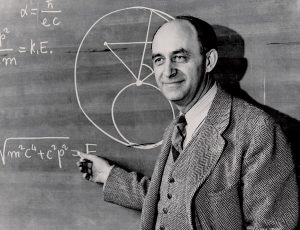
Our Story
The possibility of developing nuclear energy in Estonia was seriously considered in 2006, when the prime ministers of Lithuania, Latvia and Estonia signed a joint statement in support of the construction of a new nuclear power plant in Lithuania. The three Baltic States jointly launched a project to develop a nuclear power plant. The construction of the plant came on the agenda in the context of the closure of Lithuania's RBMK-type Ignalina nuclear power plant, which was one of the conditions of the EU accession treaty.
Due to the plan to develop a nuclear power plant, Eesti Energia, led by Sandor Liive, started to take strong steps to develop the nuclear energy sector in Estonia. Among other things, the energy company sent three Taltech energy graduates to acquire nuclear expertise at the highly regarded Royal Swedish University of Technology. Later, they were joined by a fourth Estonian, Marti Jeltsov. It can be said with great certainty that these four - Merja Pukari, Henri Ormus, Kaspar Kööp and Marti Jeltsov - are among the most highly qualified nuclear experts in Estonia today. Merja Pukari, Kaspar Kööp and Marti Jeltsov have PhDs in nuclear energy, while Henri Ormus has worked for many years for Fennovoima, the company building Finland's new Hanhikivi nuclear power plant.
A few years later, on the initiative of Academician Anto Raukas, the NGO Estonian Nuclear Power Plant was formed, with Kalev Kallemets as its CEO. The aim of the association was to analyse the feasibility of building a nuclear power plant in Estonia in a situation where the construction of a nuclear power plant in Lithuania was blocked by internal political struggles. In addition to economic considerations, there was also a growing interest in nuclear energy development in Estonia in the context of the internal political situation in Lithuania, which culminated in a negative decision in the Lithuanian referendumThe above led to Eesti Energia looking for suitable locations for the nuclear power plant. The Ministry of Economic Affairs and Communications drafted the Nuclear Energy Act.
At the same time, the construction of a number of nuclear power plants in Europe was put on hold, as it became clear that the more than two decades-long pause and the rebuilding of experience in the construction of nuclear power plants would make new projects more costly and time-consuming than expected. At the same time, the economic downturn that shook countries reduced demand for energy, and Estonia's interest in building a nuclear plant declined. Instead, the Estonian government, together with Eesti Energia, decided to build a new 300 MWe oil shale power plant at Auvere.
The tangible idea of Estonia's nuclear power plant remained collecting dust for years, until in the summer of 2018 Kalev Kallemets, Kaspar Kööp and Henri Ormus met. Being well versed in the latest developments in the nuclear field, they discussed the possibility of building a completely different, new generation nuclear power plant in Estonia, based on small modular reactors licensed in Canada and the United States. A good example was the business model used by Teolisuuden Voima and Fennovoima in Finland, where the nuclear power plant is owned by energy consumers all over the country. Technologies that developed rapidly meanwhile have turned nuclear energy into a future energy solution worth considering for Estonia again, which would help to ensure a reasonable energy price, energy security and the fulfillment of climate goals that have become nationally important.

After thorough preliminary work, Kalev Kallemets, Sandor Liive, Henri Ormus, Kaspar Kööp, Marti Jeltsov, Merja Pukari and Mait Müntel founded OÜ Fermi Energia. The founders are united by the conviction that in order to achieve carbon reduction targets, a country's energy portfolio must include a managed form of carbon-free energy that does not require subsidization. Due to the lack of mountain rivers in Estonia, only nuclear energy can achieve this.
